Chemical industry
Chemical process modelling is routinely used across industry and is a powerful design tool in reducing operating costs, avoiding the need for costly experimentation, and ensuring compliance with environmental regulations. But its effectiveness is often limited by inadequate knowledge of physical properties and their dependence on pressure, temperature, and composition. If the chemical processes involve catalysis, further limitations may arise from a lack of detailed knowledge of the factors that influence yield and selectivity. This is where the predictive abilities of computational materials chemistry can be enormously helpful.
Our case studies give examples of collaborative projects between TYC groups and the chemical industry.
Examples of materials modelling being undertaken by research groups in TYC in this area include:
- Optimal selection of zeolites or metal-organic framework materials for gas purification
- Designing new catalysts by high-throughput computational screening
- Structure-directing agents for the synthesis of microporous materials
- Improving catalysts for partial oxidation reactions
- Rapid computation of thermodynamic data for input to chemical process modelling
- Improving the catalytic yield in gas-phase polymerisation
- Designing processes to produce environmentally benign refrigerants
Protection of metals against corrosion
